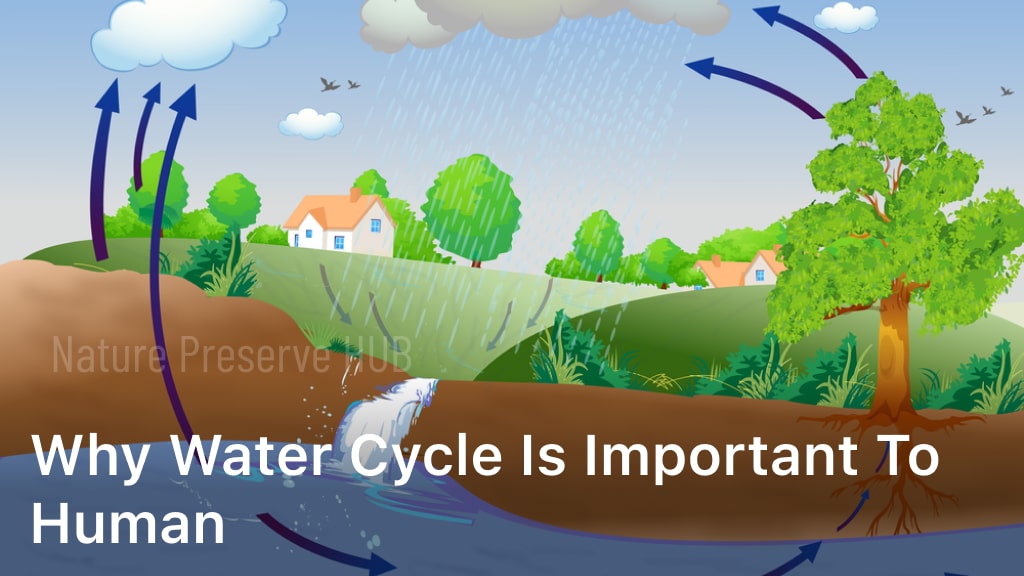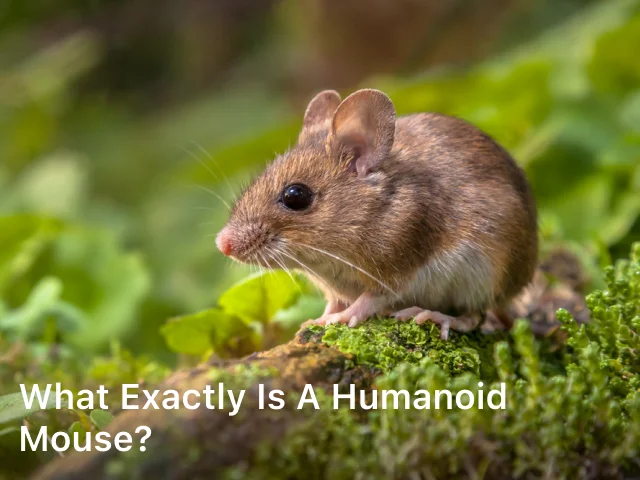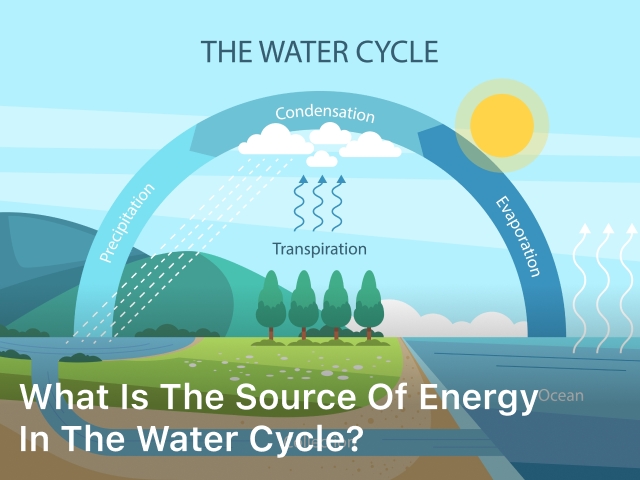Why Water Cycle is Important to Human

naturepreservehub.com. Why Water Cycle is Important to Human. an essential process for sustaining life and maintaining our ecosystems. Learn more on our site.
The water cycle, also known as the hydrologic cycle, is a natural process that allows water to move continuously around the Earth. It involves various stages that include evaporation, condensation, precipitation, and runoff. This process is essential for the survival of all living organisms on Earth, including humans.
Without the water cycle, life on Earth would not exist. Human beings, like all other species, rely on water for their survival. Water is necessary for various body functions, including digestion, circulation, and temperature regulation. Additionally, water is crucial for agriculture, industrial processes, and maintaining the cleanliness of our homes and environment.
The water cycle is not only important for human survival but also for maintaining ecosystems and biodiversity. It ensures that water is distributed evenly throughout the planet, supporting the growth of plants and animals. It also helps to moderate the Earth’s temperature, acting as a natural cooling system.
Key Takeaways:
- The water cycle is a natural process that allows water to move continuously around the Earth.
- It is essential for sustaining human life as water is necessary for various body functions and activities.
- The water cycle is crucial for maintaining ecosystems and biodiversity, ensuring the growth of plants and animals.
- It also helps to moderate the Earth’s temperature, acting as a natural cooling system.
- The water cycle is vital for human existence, and its preservation is crucial for a sustainable future.
What Is The Water Cycle?
Water is one of the most important substances on Earth. It is essential for all forms of life. Without water, there would be no life on Earth. The water cycle is the process that describes how water moves around on, above, and below the surface of the Earth.
The water cycle has many important parts, including precipitation, evaporation, and transpiration. Precipitation is water that falls from the atmosphere to the Earth’s surface.
This can happen in the form of rain, snow, sleet, or hail. Evaporation is when water on the Earth’s surface evaporates into the atmosphere. Transpiration is when water is released from plants into the atmosphere.
The water cycle is important to human beings because we rely on water for many things. We use water for drinking, cooking, bathing, and irrigation. Irrigation is the process of watering crops.
Without the water cycle, there would be no fresh water to drink or to water crops. The water cycle is also important because it helps to regulate the Earth’s temperature.
The water cycle is a never-ending process that is always happening all around us. It is an important part of the Earth’s ecosystems and helps to keep life on Earth possible.

Why Water Cycle is Important to Human
The water cycle refers to the natural process of how water moves through the environment. Understanding this process is crucial in comprehending the significance of water in sustaining life on Earth.
The water cycle consists of four main stages: evaporation, condensation, precipitation, and runoff. Evaporation occurs when water transforms from a liquid state to a gas due to heat from the sun.
Condensation takes place when water vapor forms in the atmosphere and condenses into clouds. Precipitation occurs when moisture in the clouds falls back to the earth’s surface in the form of rain, snow, sleet, or hail. Runoff is the movement of water over land surfaces to rivers, lakes, or oceans, completing the cycle.
“The water cycle is a beautiful process that ensures the continuity of life on Earth.”
This natural process is essential for the survival of all living organisms, including human beings. It provides us with the water we drink, bathe in, and use for agriculture and industry. Understanding the water cycle is critical in managing and conserving water resources and ensuring sustainable practices.
Processes That Make Up The Water Cycle
The water cycle, also known as the hydrological cycle, consists of several processes that continuously move water between the Earth’s surface and the atmosphere. These processes include:
1. Evaporation
This is the process by which water from oceans, lakes, rivers, and other surface waters is converted into water vapor due to heat from the sun.
2. Transpiration
Plants absorb water through their roots and release water vapor into the atmosphere through tiny pores in their leaves called stomata. This is known as transpiration.
3. Condensation
Water vapor in the atmosphere cools and changes back into liquid water droplets, forming clouds. This process occurs when moist air rises and encounters cooler air, causing the vapor to condense.
4. Precipitation
Water falls from the atmosphere to the Earth’s surface in the form of rain, snow, sleet, or hail. This is the culmination of the water cycle, and it replenishes water in oceans, lakes, rivers, and on land.
5. Infiltration
Precipitated water that reaches the ground can either flow over the surface (runoff) or seep into the ground. Infiltration is the process of water penetrating the soil and becoming groundwater.
6. Surface Runoff
Water that does not infiltrate the soil may flow over the land surface and eventually find its way into rivers, lakes, or oceans. This runoff plays a crucial role in shaping landscapes.
7. Subsurface Flow
Some water that infiltrates the soil moves below the surface, creating underground flows that contribute to the formation of groundwater.
8. Surface Water Storage
Water accumulates in various surface reservoirs such as oceans, lakes, rivers, and ponds. These storage bodies play a vital role in maintaining a balance in the water cycle.
These interconnected processes ensure a continuous movement and exchange of water between the Earth’s surface and the atmosphere, maintaining a dynamic equilibrium in the distribution of Earth’s water resources.
Keep Reading : What is The Source of Energy in The Water Cycle?
Importance of Understanding the Water Cycle
By comprehending the water cycle, we can appreciate the interconnectedness of different ecosystems. It helps us to understand how our actions can impact the environment and the water cycle process.
For example, deforestation can disrupt the water cycle process, leading to soil erosion and low water retention, and ultimately causing drought. Furthermore, climate change can exacerbate water scarcity and affect the natural balance of the water cycle.
- Understanding the water cycle is crucial in comprehending the importance of water in sustaining life on Earth.
- The water cycle involves four stages: evaporation, condensation, precipitation, and runoff.
- Comprehending the water cycle is necessary in managing and conserving water resources and ensuring sustainable practices.
- Understanding the water cycle helps us to appreciate the interconnectedness of different ecosystems.
Overall, comprehending the water cycle is critical in recognizing the significance of water in sustaining life and maintaining environmental balance. It is essential to preserve and protect this natural process for the health and well-being of all living organisms on Earth.
Water Cycle and Sustaining Life
The water cycle plays a critical role in sustaining life on Earth. Water is an essential resource that humans, animals, and plants need to survive.
Without it, life as we know it would not exist. In this section, we’ll explore how the water cycle supports life and the various ways humans depend on this process.
One of the primary ways humans rely on the water cycle is for drinking water. Water is a fundamental component of the human body, comprising up to 60% of an adult’s weight. Without access to safe and clean drinking water, humans can quickly become dehydrated, leading to serious health issues.
Additionally, the water cycle is essential for agriculture, as crops and livestock require water to grow and thrive. Irrigation systems, which rely on the water cycle, are used worldwide to produce food and sustain livelihoods.
The water cycle also plays a crucial role in maintaining hygiene, as water is necessary for washing hands, bathing, and cleaning. Without access to clean water, the spread of diseases can become rampant, leading to public health crises.
The water cycle is not just essential for human survival, but also for maintaining the balance of ecosystems and biodiversity. Wetlands, for example, rely on the water cycle to support unique and diverse plant and animal species. Similarly, bodies of water, such as lakes and rivers, provide habitats for fish and other aquatic life.
The Role of the Water Cycle in Ecosystems
Wetlands are a particularly important ecosystem that relies heavily on the water cycle. Wetlands are areas where water covers the soil, either for a portion of the year or throughout the year.
These areas are home to a variety of plants and animals, many of which are endangered or threatened. The water cycle supports wetlands by regulating the water levels, allowing these ecosystems to thrive and support biodiversity.
In addition to wetlands, the water cycle is also crucial for maintaining other ecosystems, such as forests and grasslands. Trees and plants require water to grow and absorb nutrients, providing habitats for various animals.
As you can see, the water cycle plays a vital role in sustaining life on Earth. Humans and animals alike depend on this natural process, making it essential to protect and preserve for future generations.
Keep Reading : What is The Sun’s Role in The Water Cycle?
Environmental Impact and the Water Cycle
The water cycle is a delicate natural process that sustains life on Earth. However, human activities have had a significant impact on this process, disrupting its balance and causing environmental degradation. The following are some of the environmental impacts of human activities on the water cycle:
“We are seeing the impacts of climate change on the water cycle, such as changes in precipitation patterns and increased frequency of droughts and floods. These disruptions can have devastating effects on ecosystems and human communities.”
One of the most significant impacts of human activities on the water cycle is pollution. Industrial and agricultural practices release large amounts of harmful chemicals into the environment, contaminating water sources and disrupting the natural balance of the water cycle. This pollution can have a severe impact on human health, wildlife, and ecosystems.
Deforestation is another human activity that disrupts the water cycle. Trees play a critical role in regulating the water cycle by absorbing water through their roots and releasing it into the atmosphere through transpiration. Deforestation reduces the number of trees available to perform these functions, resulting in decreased rainfall and increased soil erosion.
Climate change is also affecting the water cycle, with rising temperatures causing more evaporation and higher atmospheric moisture levels.
This increased moisture can cause more frequent and severe weather events, including floods and droughts, which can have significant impacts on ecosystems and human communities.
The Impact of Environmental Disruption on the Water Cycle
The disruption of the water cycle has several significant impacts on the environment, including:
- Decreased water quality due to pollution and contamination
- Reduced biodiversity and habitat destruction
- Spread of water-borne diseases
- Food scarcity due to agricultural disruptions
It is essential to take steps to reduce the environmental impact of human activities on the water cycle. This can be achieved through sustainable practices that reduce pollution, promote reforestation, and mitigate climate change.
“We must recognize the importance of the water cycle for sustaining life on Earth and take action to preserve and protect this essential natural process.”
Conclusion
After exploring the significance of the water cycle for human life, it is clear that this natural process is essential for sustaining life and maintaining the balance of ecosystems.
By understanding the water cycle and its various stages, we can grasp how water moves through the environment and its importance to human beings.
Water is necessary for human survival, including drinking, agriculture, and hygiene. Moreover, the water cycle plays a crucial role in maintaining ecosystems and biodiversity. However, human activities have had a severe impact on the water cycle, including pollution, deforestation, and climate change.
It is essential to recognize the environmental impact of our actions and take steps to preserve and protect this vital process. By adhering to sustainable practices, we can ensure the continued functioning of the water cycle and secure a healthier future for both ourselves and our planet.
FAQ
Why is the water cycle important to humans?
The water cycle is important to humans because it plays a vital role in sustaining life and maintaining ecosystems. It ensures the availability of freshwater for drinking, agriculture, and hygiene. Additionally, the water cycle helps regulate the Earth’s climate and supports biodiversity.
What is the water cycle?
The water cycle is a natural process that describes how water moves through the environment. It involves several stages, including evaporation, condensation, precipitation, and runoff. This constant cycling of water helps distribute it across the Earth’s surface and replenish water sources.
How does the water cycle sustain life?
The water cycle sustains life by providing freshwater for various essential purposes. Humans rely on water for drinking, cooking, sanitation, and agriculture. It also supports the survival of plants, animals, and ecosystems, enabling biodiversity and ensuring the functioning of natural processes.
What is the environmental impact of the water cycle?
Human activities can have environmental impacts on the water cycle. Pollution, such as industrial waste and chemical runoff, can contaminate water sources and harm aquatic life. Deforestation and urbanization can disrupt the natural flow of water, leading to issues like flooding. Climate change can also alter precipitation patterns, affecting the availability of water resources.
How can we protect the water cycle?
To protect the water cycle, it is crucial to practice sustainable habits. This includes conserving water by minimizing waste, using water-efficient technologies, and implementing responsible farming practices. Additionally, reducing pollution, conserving forests, and mitigating climate change can help maintain the balance of the water cycle and preserve its integrity.





